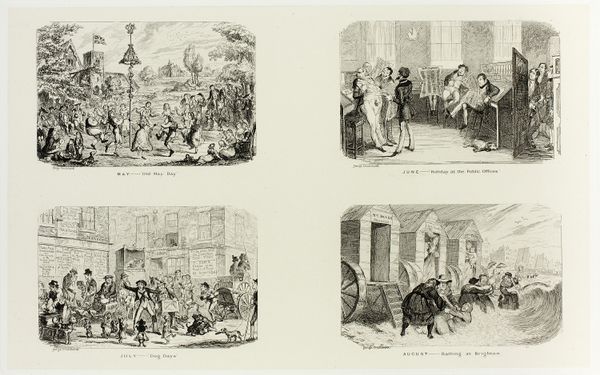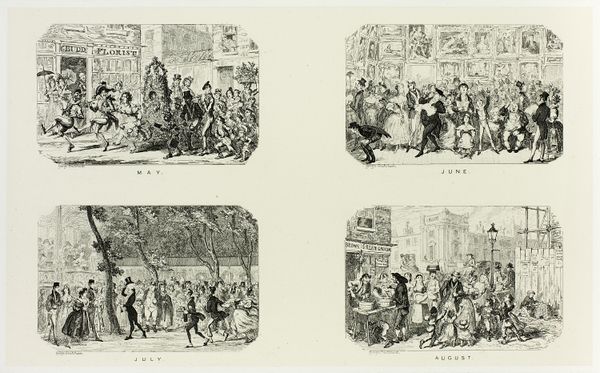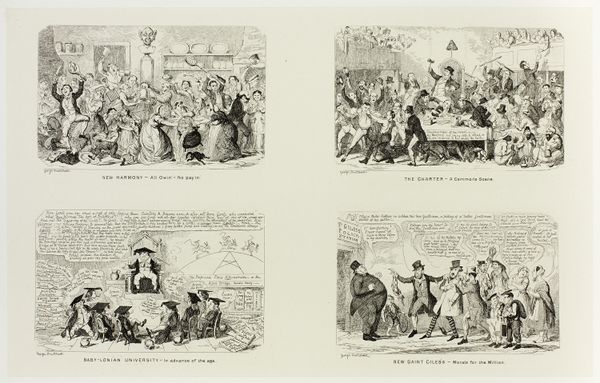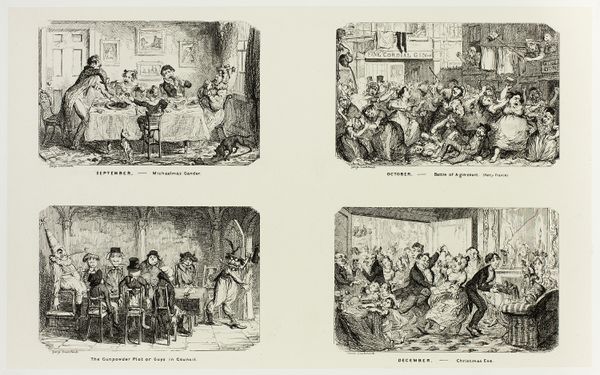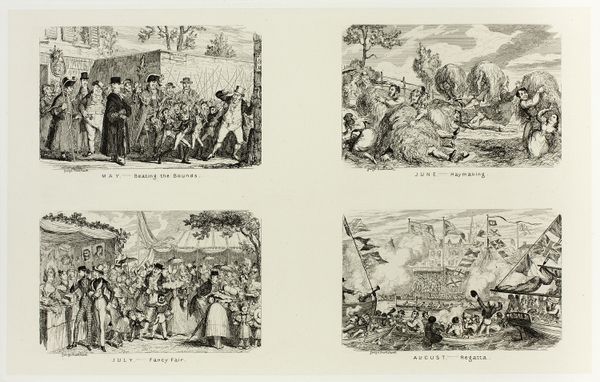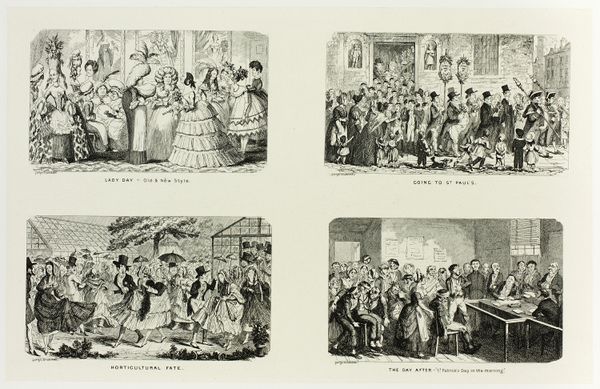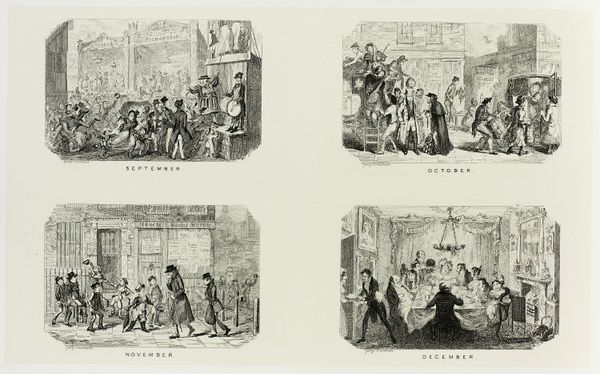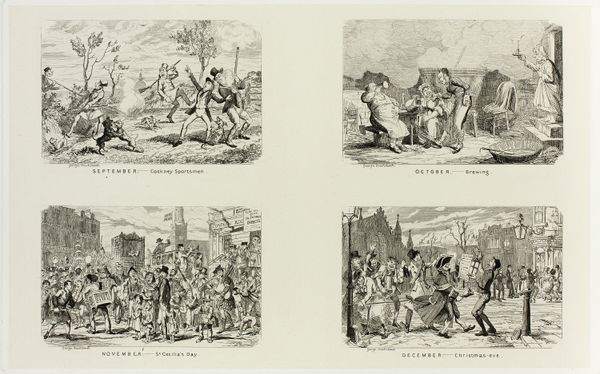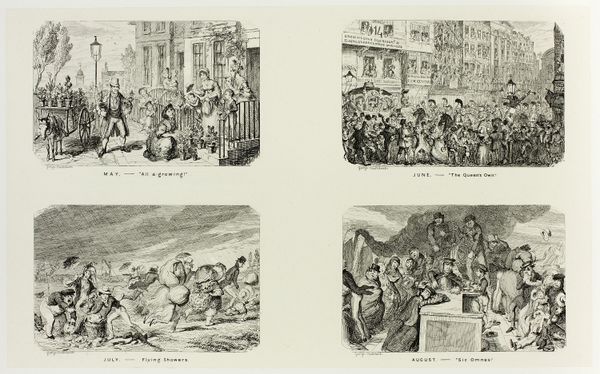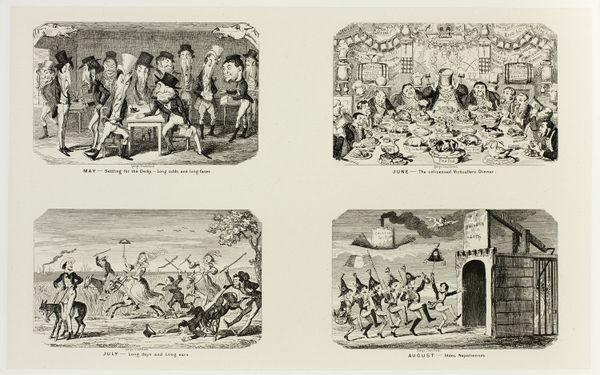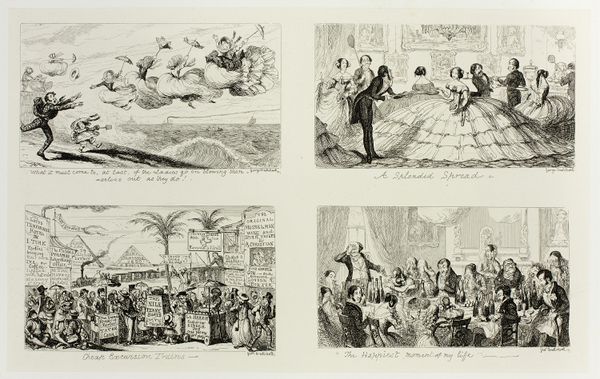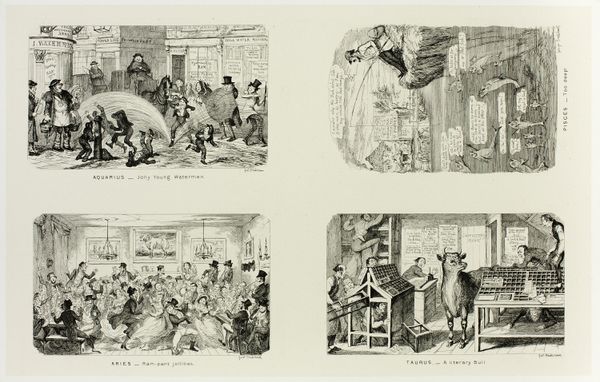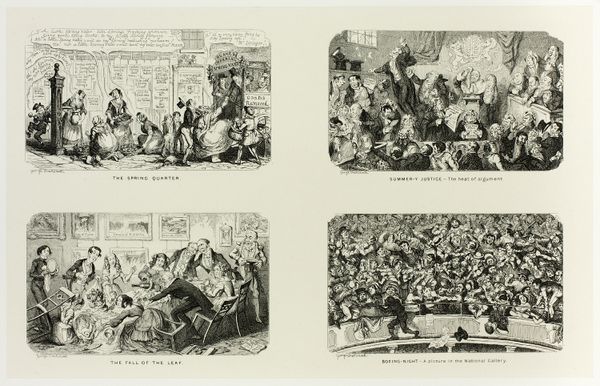
Twelfth Night from George Cruikshank's Steel Etchings to The Comic Almanacks: 1835-1853 (top left) c. 1845 - 1880
0:00
0:00
drawing, print, etching, paper, engraving
#
drawing
#
narrative-art
# print
#
etching
#
caricature
#
paper
#
england
#
engraving
Dimensions: 212 × 330 mm (primary support); 342 × 508 mm (secondary support)
Copyright: Public Domain
Editor: Here we have George Cruikshank's "Twelfth Night from George Cruikshank's Steel Etchings to The Comic Almanacks: 1835-1853 (top left)", an etching created sometime between 1845 and 1880. The scene feels busy and the figures are all rather exaggerated. What strikes you about this piece? Curator: What jumps out at me is how Cruikshank uses caricature to critique Victorian society. The scene "Twelfth Night" depicts what appears to be a parlor game or celebration. What do you notice about the way individuals are portrayed in this scene, and how does it relate to societal roles and power dynamics? Editor: They look a bit silly, almost like puppets. The person sitting up high seems to be the center of attention, with others fawning over them. Curator: Exactly! This exaggerated depiction isn't just humorous; it's a commentary. Cruikshank was known for using his art to address social issues. Think about the context: this was a period of strict class divisions and social performances. Could this be a visual jab at the performative nature of class and gender within Victorian England? The figures are acting out roles rather than authentically connecting, thus implying class structure as a performance itself. Editor: So, he’s using humor to make a larger point about inequality? Curator: Precisely! The comedic lens is used to dissect the very structure of Victorian society, revealing its absurdities and highlighting inherent power imbalances. What does situating Cruikshank’s etching within broader discussions about class, gender, and representation tell us? Editor: That art can be both entertaining and a tool for social commentary. I guess it makes sense why this drawing is part of a collection of comic almanacs. Curator: Precisely, that the format of comical art such as the Comic Almanack becomes a site for reflecting popular Victorian sentiments on England’s ever-changing society, thus complicating simple readings of comedy versus social awareness.
Comments
No comments
Be the first to comment and join the conversation on the ultimate creative platform.
